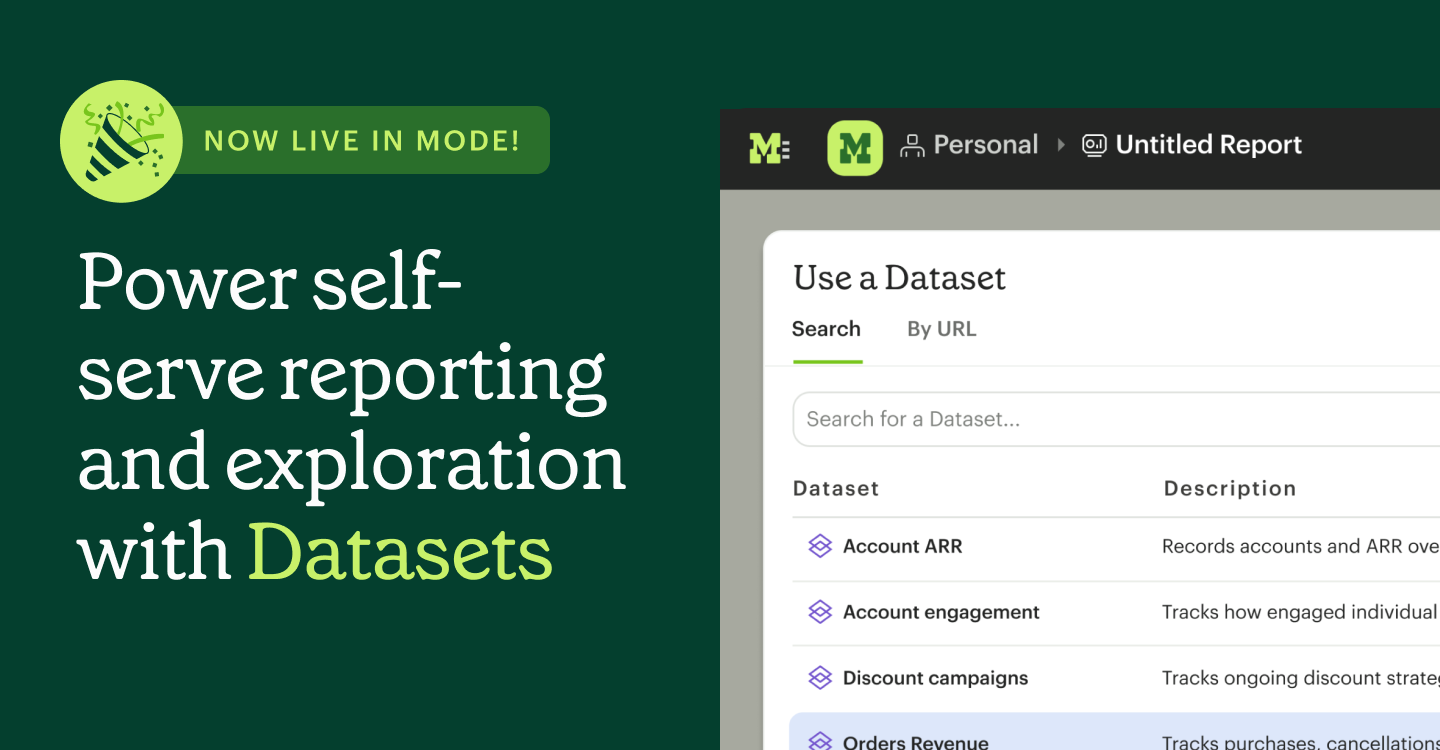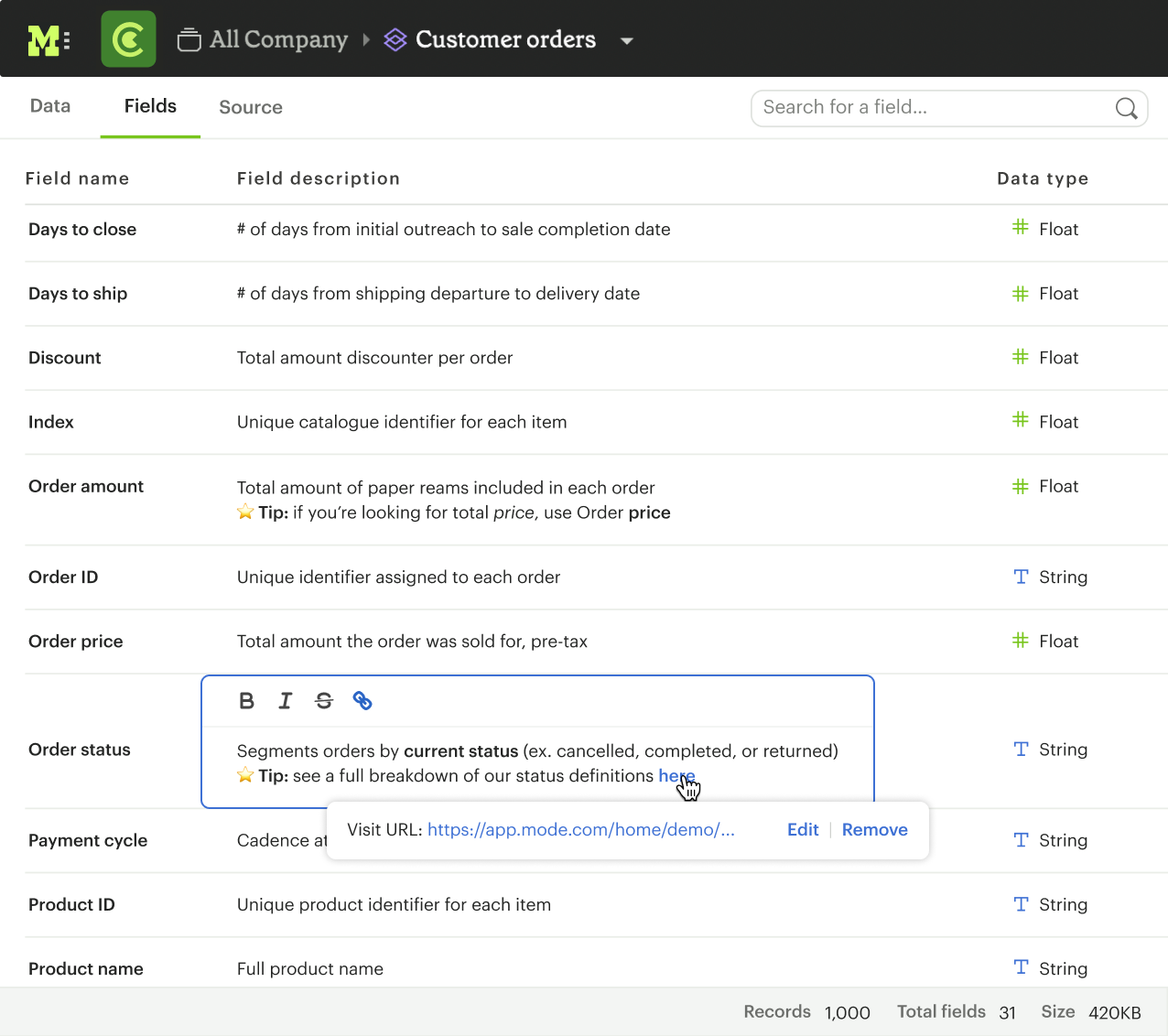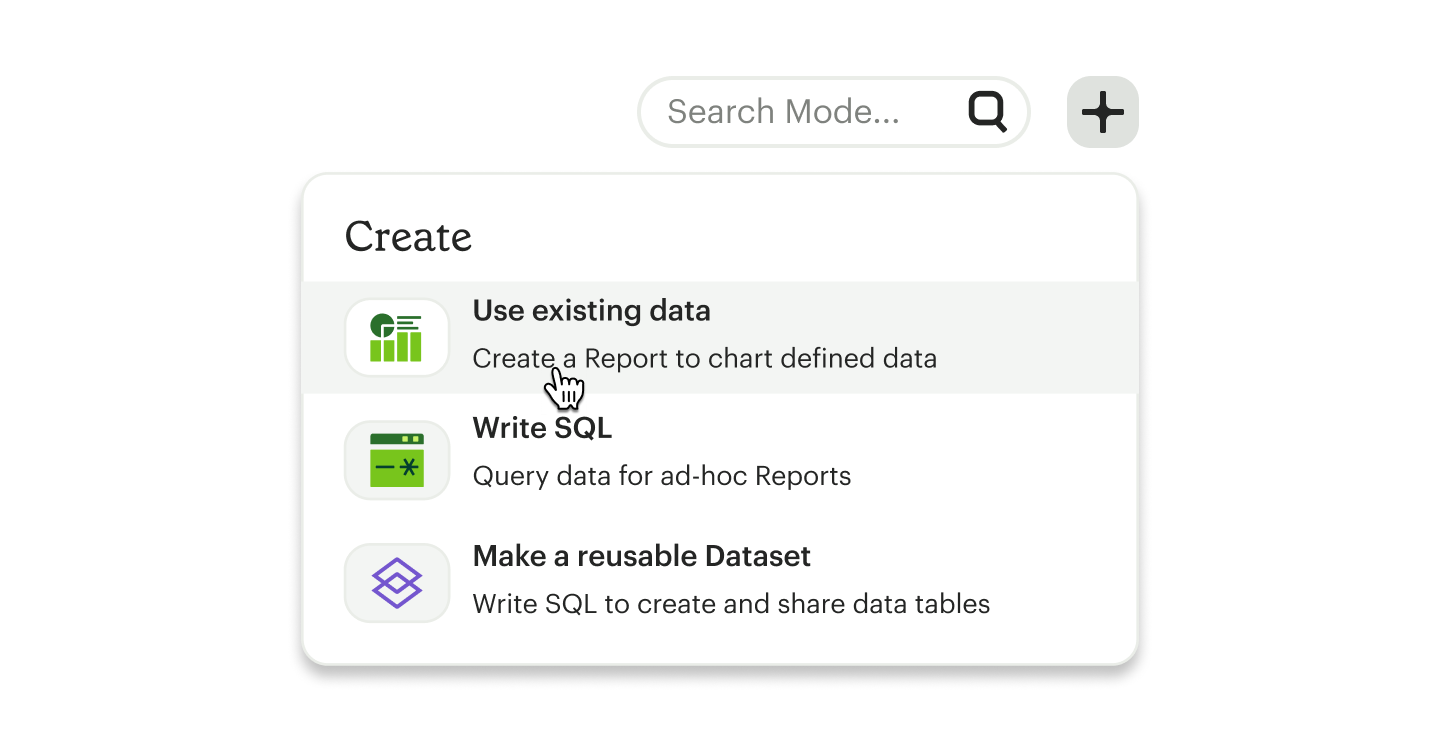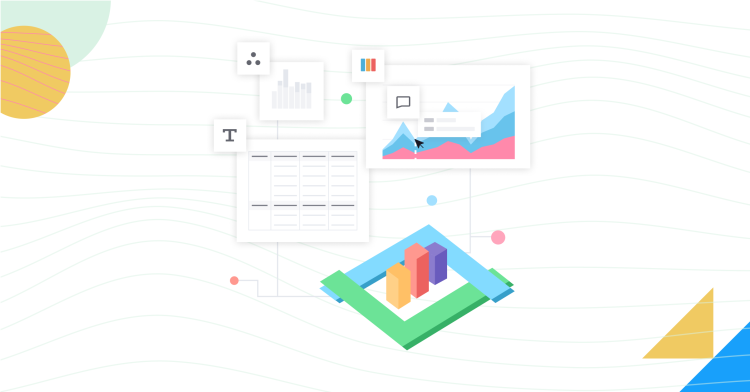What’s New with Datasets
Katie Paxson Flynn, Director, Product Marketing — Core
May 17, 2023
NaN minute read

Datasets is officially out of beta
This past December, we started rolling out Datasets to expand Mode’s code-free data exploration capabilities. In the current economic climate, resource-constrained data teams are under more pressure than ever to help colleagues explore data and build their own accurate reporting.
While the feature was in beta, we worked with many data teams and their stakeholders to expand Datasets capabilities and continue to chart the roadmap of self-service analytics in Mode. Datasets has now graduated from beta, and is enabled for the majority of organizations using Mode.
Datasets are curated, reusable tables of data that power self-serve reporting and data exploration. Building Datasets for end users can reduce repetitive data requests and centralize key business logic. Data teams who implement Datasets are able to operate more efficiently and spend more time on their key initiatives, whether that’s supporting strategic decision-making with ad hoc analysis, or increasing data literacy across business teams.
Increasing data literacy through ad hoc analysis and self-serve reporting
Increasing data literacy is critical for businesses today. The ability to make quick, data-informed decisions leads to better business outcomes. At the same time, building and maintaining the foundation and data infrastructure that enables this performance is a multi-step process.
To build their own reporting, a business team needs to have data model or business logic to start from. Building those models, defining that logic, and making it accessible to the business is a key component of an analyst’s job. But what about the ad hoc analysis that comes first?
Before there’s a model, there’s raw data - and analysts are uniquely capable of diving into un-modeled data stored in the warehouse, and querying and shaping it for use by others less familiar with what’s in the warehouse.
Nuanced questions inevitably come next: “Does this weekly active user count include weekends? Does this MQL count include content downloads?” When all this iterative work can be done in a single platform, it can accelerate how teams work together to build shared understanding.
Now with Datasets, that shared understanding can be more deeply codified and opened up as a foundation for self-service reporting.
Dataset Curation: Step 1 of successful self-serve reporting
Building robust Datasets gives business teams a trusted starting point for data exploration.
For our customers who have been working with Datasets, making key tables led to more questions from business teams, and the desire for easier access. As a result, our feature development since the initial launch has focused on making providing more context and easier access for business teams.
Increased Context
Field Descriptions enable Dataset creators to provide in-depth explanations each field. Field Descriptions help business users understand the difference between similar-sounding fields, like Account Tier vs. Account Segment, remind them when to use certain fields over another, and define key business metrics. Ensuring that business teams have a thorough understanding of what’s in the Dataset can increase trust, and ultimately, independent usage.

Improved Access
From almost anywhere in the product, business teams can access Datasets (or dbt metrics) with a single click. By selecting ‘Use existing data’, business teams can browse available Datasets, and jump right into building data visualizations with confidence.

Updated Permissions, programmatic scheduling and more
A new Permissions setting enables Admins to control who can create Collections, which improves Datasets governance by giving Admins control over how Datasets are distributed and discovered in an organization.
Team leads and Admins can keep track of a Dataset’s version history using Github sync.
New endpoints in Mode’s API enable you to programmatically set up a Dataset refresh schedule. Run a Dataset when there’s new data in the warehouse, then refresh downstream Reports. This ensures that Reports built on Datasets are always using the freshest data with no manual effort and no unnecessary warehouse compute.
Discovery Database, which is a feature that enables customers to track their Workspace usage data, includes new tables on Datasets usage, which allows Admins to get a high-level view of Datasets and answer questions like, “How many Datasets has my org created? What are the top used Datasets? What Reports use a specific Dataset?” and more.
Datasets best practices
Writing a query to create a Dataset is not complicated, but building a truly useful (and trusted) Dataset for another team can be accelerated with a little up-front planning.
Don’t build Datasets in a vacuum. Do a quick needs assessment with your business partners.
Say, for example, your marketing team asks to see funnel performance data in a wide variety of ways. Those requests can get tedious to support. With a bit of up-front collaboration, your data team can build a robust Dataset, with the right columns needed to support a wide array of filtering.
This template provides some good questions to start with. As the Dataset is shared with the team and they begin building Reports with it, new questions are going to come up. Collaborating with business teams early and often ensures that the end deliverable is highly impactful to the decisions that team makes, and ultimately, the business.
Organize Datasets by Team or Project.
Just like any beloved analysis or key dashboard, we recommend moving Datasets out of Personal Collections and into Shared Collections. When a Dataset lives in a Shared Collection others can find it in the Datasets browser, via the Search, or in the collection alongside other relevant team content. This video on making Datasets discoverable in Mode provides additional tips and tricks.
Start Small
Rolling out Datasets doesn’t have to be an all or nothing approach. Start with a very specific project or investigation that requires collaboration across teams. Find one stakeholder team who is comfortable with analysis, and hungry for their own data assets. Or, start with existing logic that’s already defined in another tool, and bring it into Mode. This webinar provides detailed walkthroughs of use cases and ways to get started.
Want more?
For a full collection of resources to help both data and business teams get started with Datasets, check out this guide. Or, register for one of our upcoming Office Hours sessions, where product experts will be there live to answer questions, do demos, and help you think through your approach to Datasets.
Unlocking the virtuous cycle of ad hoc analysis to self-serve reporting and back again can accelerate the impact of both data teams and business teams alike, allowing everyone to drive better business outcomes across the board. Try Datasets in Mode today!
Get our weekly data newsletter
Work-related distractions for data enthusiasts.




